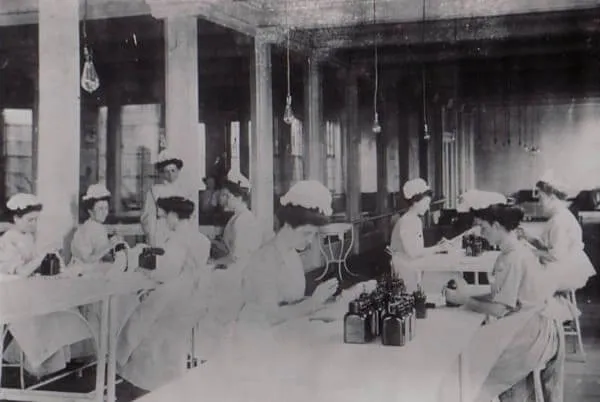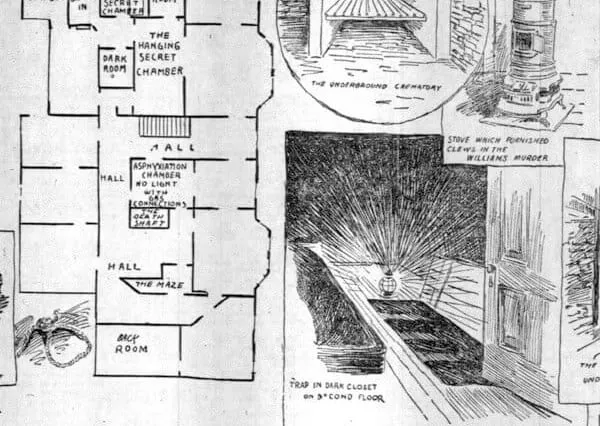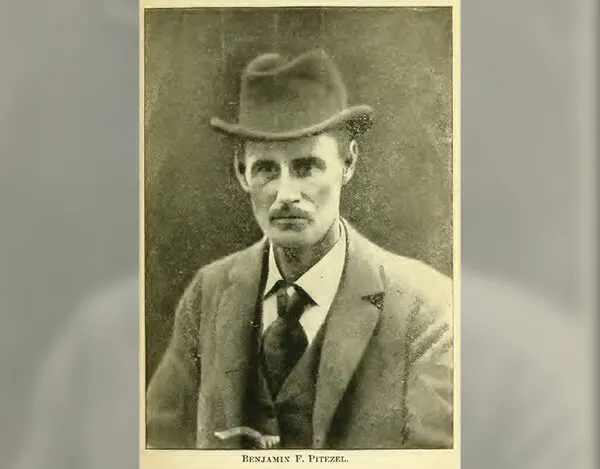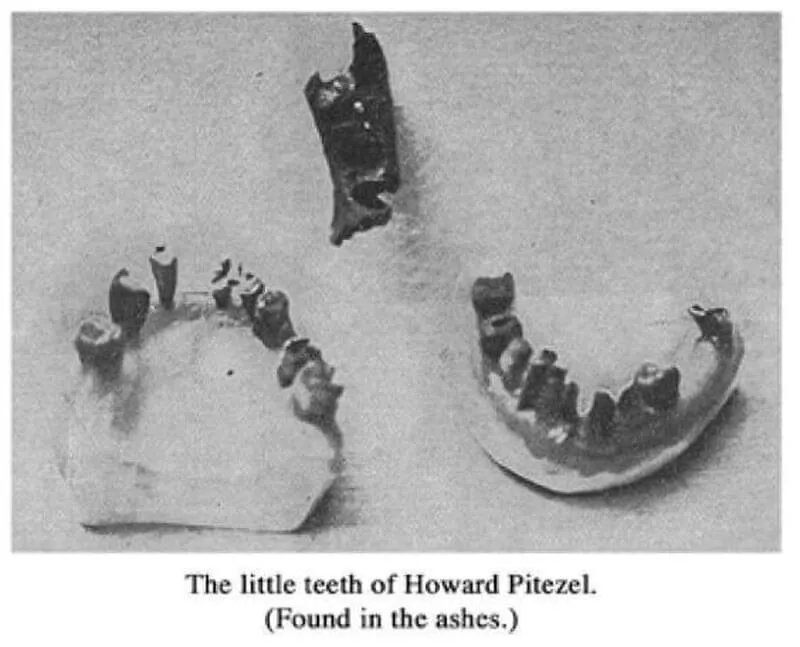Incredible Revelations About Serial Killer Robert Maudsley, The Real-Life “Hannibal The Cannibal”
Between 1974 and 1978, Robert Maudsley was a menace in the British prison system. He was unlike any other prisoner that had been held within those walls.
Not only did he kill, but he tortured and tormented fellow inmates and prison guards. The press has called him "Britain's Most Dangerous Prisoner," and for good reason. He's also been referred to as the real Hannibal the Cannibal for reasons that you're about to see. The connection isn't a stretch by any sense of the word.
He Grew Up In An Orphanage

Before Robert Maudsley was even two years old, he was removed from the family house because of parental child abuse. He was placed in an orphanage in Liverpool, England.
The children in the orphanage often become very close to each other and with the nuns who ran the children's home.
He Was Given A New Chance At Home

Maudsley's parents returned to the orphanage and ended up bringing back all four of their children to their house. Shockingly, by the time the four returned, the parents had eight more kids hanging around the house.
Their father continued to physically abuse them and when Maudsley was ten years old, he was placed back in a foster home.
Back To The Foster Care System

While he was in foster care, his father told the rest of his siblings that he had died. It wasn't until years later that Maudsley's brother and sister found out that he was actually still alive.
When he was 16, he ended up leaving the foster home and moved to London on his own.
The Street Life Caught Up With Him
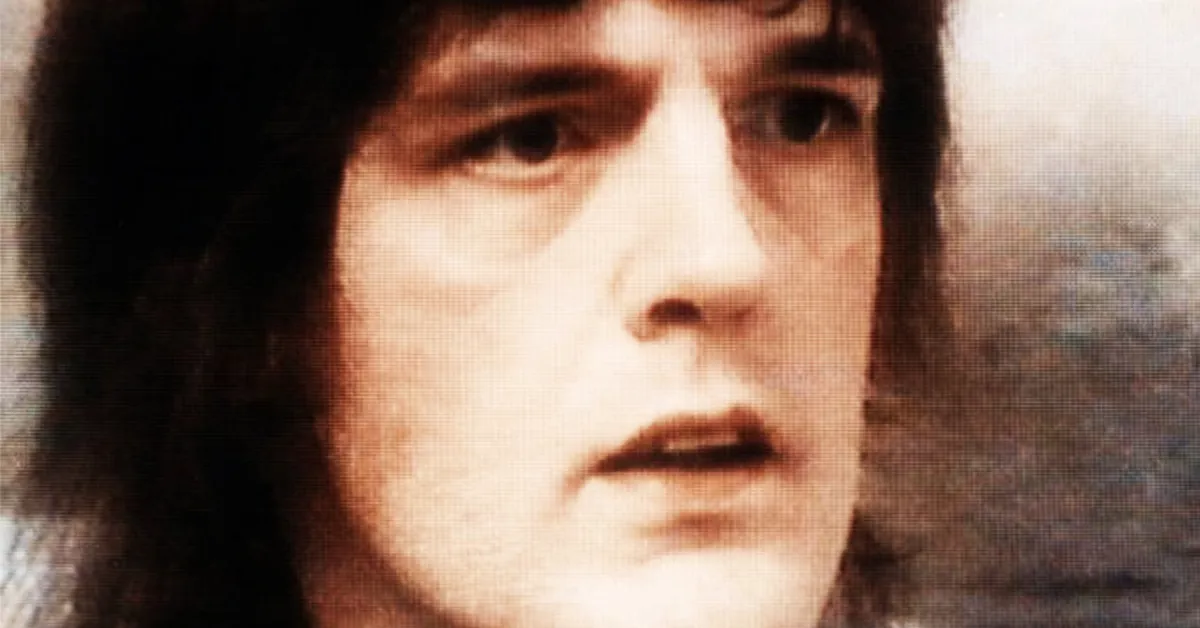
Shortly after being all alone in London, he became addicted to drugs. With no familial backing, and no ground to stand on, it was basically the natural next step.
When his addiction became so bad, he turned to the life of a street worker in order to meet the financial needs of his habit.
He Turned To Sex Work

It was while working as street walker that his life would begin to spiral out of control. Through his sex work, he met a man named John Farrell.
After sleeping with Farrell, Maudsley claimed that he was shown pictures of children the man had sexually abused. They didn't sit well with Robert.
He Was Sent Away
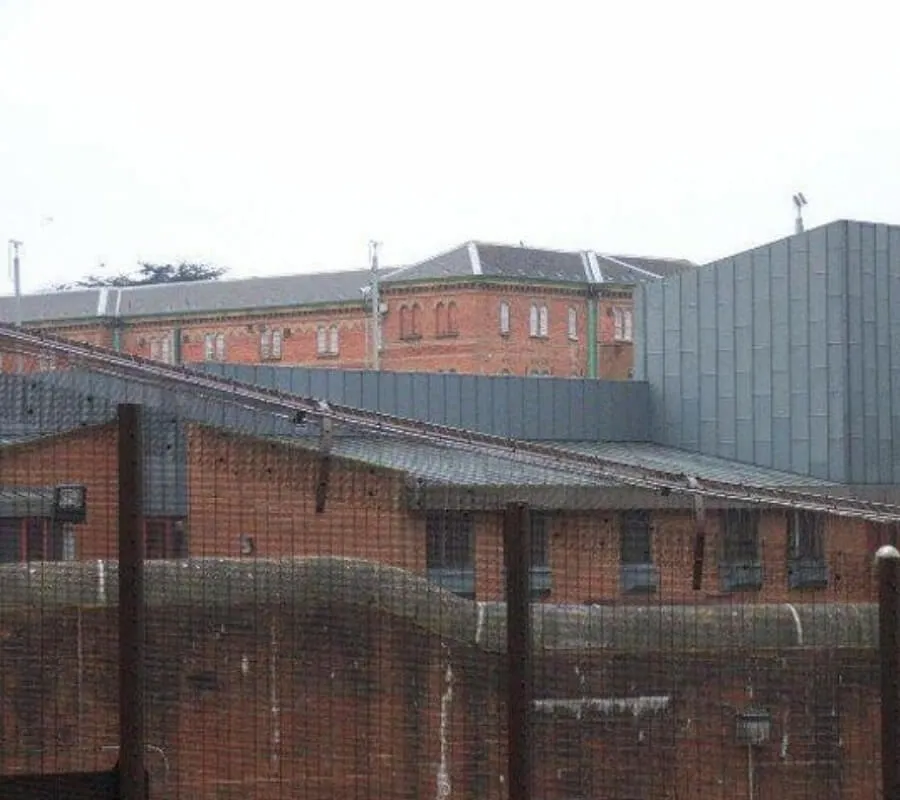
Having been abused himself, Maudsley became enraged and out of control. He first strangled Farrell. Then, he stabbed him with a knife and finally beat his limp body to a pulp.
The 20-year-old had just committed his first murder. He was claimed to be unfit to stand trial and was sentenced to life in Broadmoor psychiatric hospital.
He Was Given Some Slack By The State

Before killing Farrell, Maudsley had attempted to commit suicide a handful of times. He had even told doctors at the hospital that he was hearing voices telling him to kill his mom and dad.
He ended up only being convicted on manslaughter and not murder because of his personal history.
He Wouldn't Last Very Long

Broadmoor hospital is notorious for keeping some of the most brutal serial killers behind its walls. Maudsley now had to serve a lifetime sentence at this high-security prison/psychiatric institution.
But, he wouldn't end up being there too long after an incident between him and two other inmates. It took a turn for the worst.
The Human Heist Commenced

Maudsley and another patient named John Cheeseman forced a third patient into an office and tied him up. That third patient was convicted pedophile David Francis.
Over the next couple of hours, Maudsley and Cheeseman tortured Francis, claiming that he had sexually assaulted one of their friends. It got worse too.
It Was An Incredibly Disturbing Sight
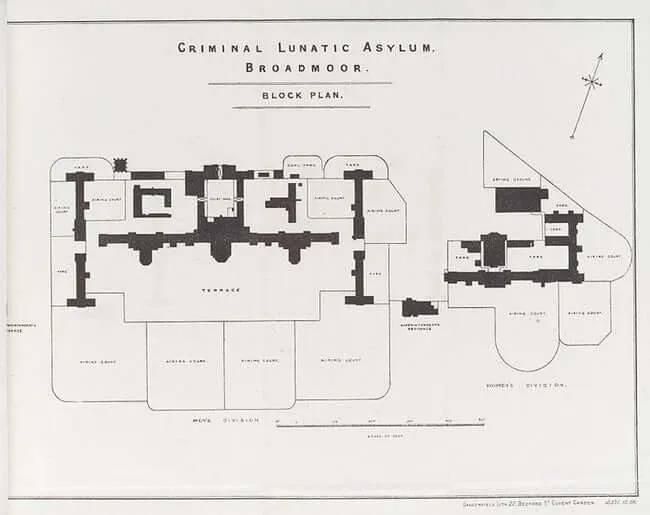
After about nine hours of beatings in the barricaded room, they strangled him. Following the murder, they allowed hospital staff to enter the room.
According to a guard, there was a spoon hanging out of the victim's cracked open head and some of his brain matter had been missing. Some people close to the matter said this was false.
He Was Relocated
After the killing of David Francis, Maudsley was relocated and convicted of manslaughter again. The courts made him serve time at Her Majesty's Prison Wakefield.
It's a high-security facility a few hours away. When he arrived, he was given the nickname "Spoons" by the other inmates because of the stories they had heard.
He Would Kill Again

While serving his sentence in the new prison, he would kill again. In fact, he would kill not one, but two different inmates.
Some fellow prisoners even said that Maudsley told them he wanted to murder seven different people in one day. The first was Salney Darwood, and the second was Bill Roberts.
Salney Darwood

He would lure prisoners into his cell. He successfully convinced Darwood — a man who was convicted of killing his wife— to enter his cell.
He killed him and hid the body underneath his bed. He tried to get others to come in, but none of them would.
Brian Roberts

That is, until 56-year-old Bill Roberts went in. Maudsley took advantage and stabbed Roberts with a shiv and then beat his head into the wall.
After killing Roberts, Maudsley gave the makeshift prison knife to authorities telling the guards that he had murdered two more men. That meant more action needed to be taken by authorities.
They Built Him A Glass Cell

After the courts convicted Maudsley of the two additional killings, he returned to Wakefield Prison to finish his sentencing in solitary confinement.
In 1983, he was declared too dangerous to be housed in an ordinary cell and they ended up building a special unit for the killer in the basement of the prison.
The Cell From Hell

His cell was primarily made out of bulletproof plexiglass and only contained a concrete bed, sparse furniture made from cardboard and bottled down bathroom fixtures.
The unit itself was compared to Alcatraz (similar to the one in the picture above), and it also housed cells for Charles Bronson and Reginald Wilson.
He Was Dubbed Hannibal The Cannibal
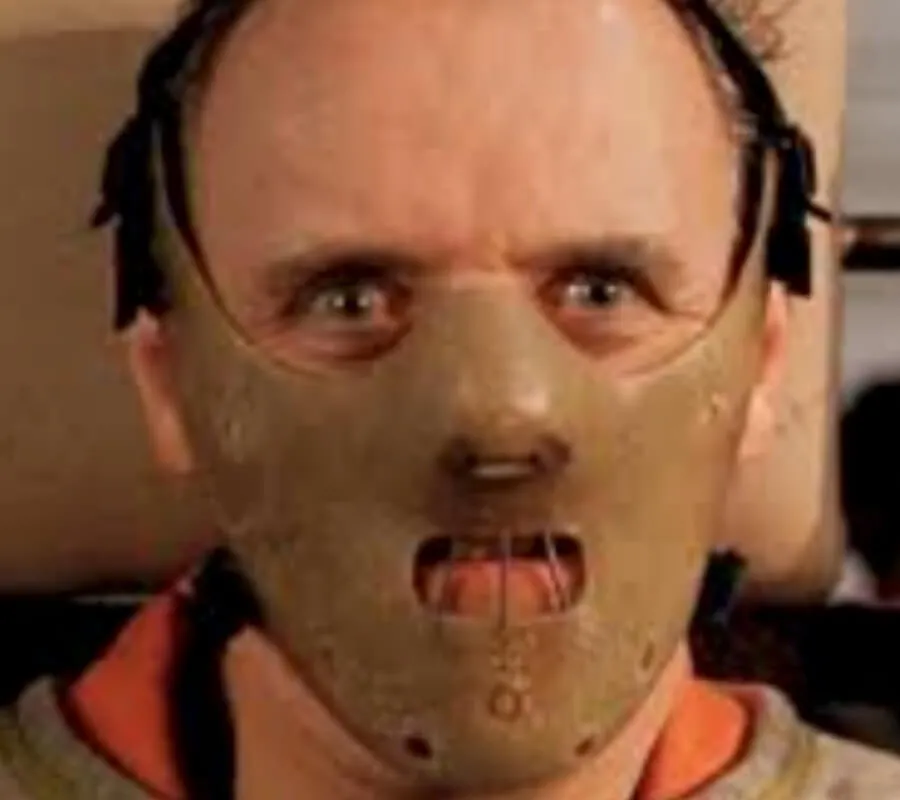
This nickname was a result largely based on the incident that happened at Broadmoor prison/hospital. You know, the whole spoon in the brains thing?
Well, the nickname was associated with Thomas Harris's 1981 fictional character, Hannibal Lecter who Anthony Hopkins portrayed in the 1991 film Silence of the Lambs. Scary.
The Similarities Are Creepy

You might also notice that Maudsley's special prison cell is also made up mainly of plexiglass, similar to the one that is seen in the film.
Like Lecter, Maudsley murdered people behind bars, which ultimately made him a uniquely dangerous criminal. There are even more similarities on the next page.
The Love Of, Uh, Classical Music?
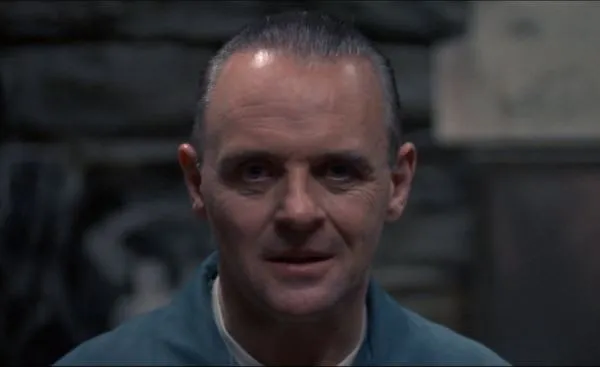
Additionally, Maudsley is incredibly intelligent, like, basically genius-level IQ. He shares the character's love of art, literature, and classical music.
Maudsley also is reportedly interested in taking college classes on art and music, and people who have remained in contact with Maudsley has said that he is actually quite pleasant to be around.
He Lives A Miserable Life

Maudsley is now confined to 23 hours a day in his cell for the rest of his life. He's been in prison for more than half of his life, and much of that time he's been kept in solitary confinement.
The killer is not allowed to talk to any of his fellow inmates.
One Hour To See The Sunlight

He gets to leave his cell to go to the exercise yard, but he's not alone. In fact, there has to be five correctional officers outside with him at all times to watch his every move.
He says that his lack of physical human contact has been difficult for him, and says that solitary confinement is one long period of unbroken depression.
He Kept His Parents In Mind
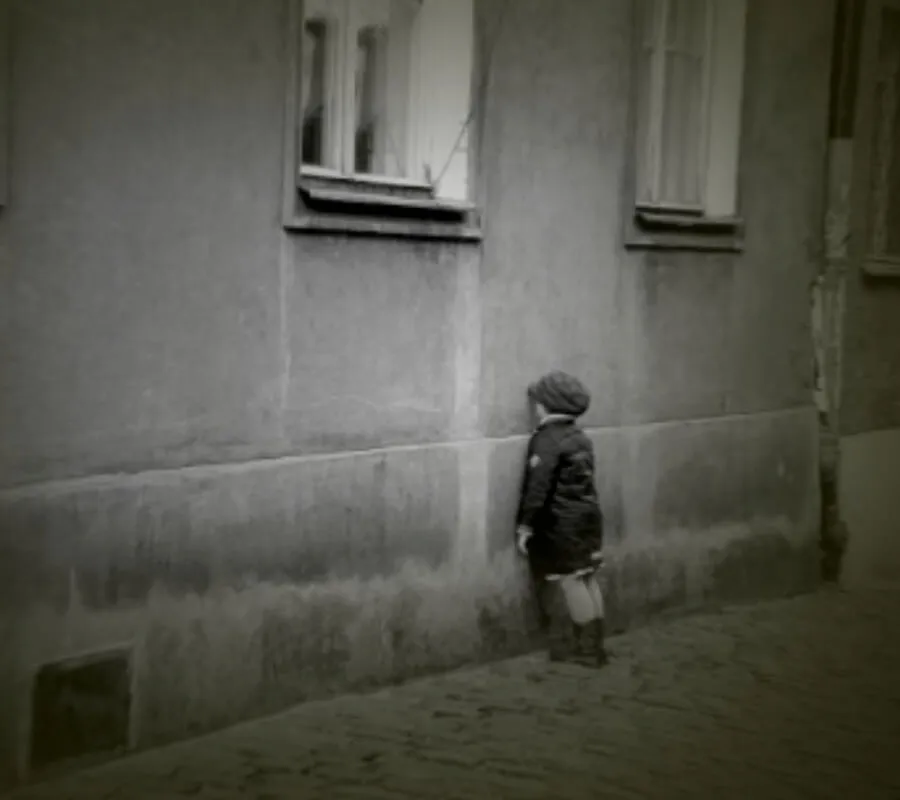
In a really creepy confession, he said that when he was killing, he thought about his parents and he would get into an inconsolable rage.
The physical abuse and neglect as a child drove him to kill four men, he claims. He thinks that if he was able to kill his mom and dad before his first victim, he wouldn't have taken any more lives.
It's A Pet Or Death

He says that he's incredibly depressed and angry all the time. After decades in solitary confinement, I guess that's what it will do to you.
In 2000, he wrote to a British newspaper asking for a pet to keep him company in the cell. He told the guards if they can't do that then he would like permission to kill himself via cyanide poisoning.
Board Games Perhaps?

As we talked about earlier, he's incredibly intelligent. In 2010, he asked if he would be allowed to play board games with some of the prison officials so that it can pass time quicker.
Well, it's safe to say that those officials are a little bit hesitant considering he's murdered a few people behind bars.
More On The Two Others Housed In The Special Cell

It's important to understand the scope of a killer that Robert Maudsley was seen as. The special unit that was created for him has now housed just a few more prisoners.
One of those was Charles Bronson and the other was Reginald Wilson, two notoriously crazy and psychotic killers in the UK.
Charles Bronson

He has been dubbed "the most violent prisoner in Britain". He was first arrested as a petty criminal and it quickly turned into much more.
He was well-known for taking numerous hostages while in prison. He was consistently violent toward other inmates and guards, which ended up upping his sentence to life imprisonment.
Reginald Wilson
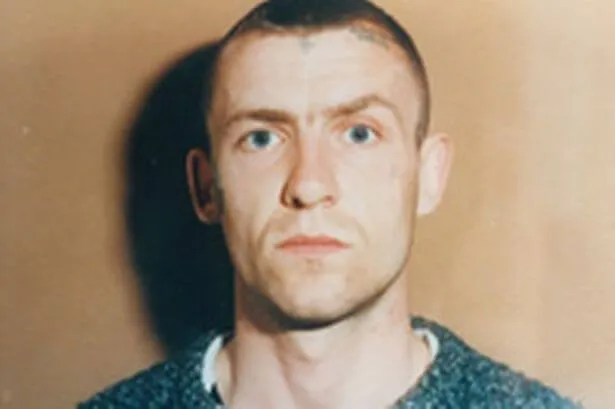
He's a psychopath that clubbed a respected skin specialist to death in his own home, then boasted to police that he committed the perfect crime.
After killing the doctor, he sent police a self-congratulatory letter. Once he was caught, he became a disruptive inmate and even cut through the bars of his cell.
Other Notorious "Cannibals"

Probably one of the most known serial killers and cannibals is Jeffrey Dahmer. At age 18, he killed his first person. He would go on to kill 17 boys to satisfy his sexual urges.
He kept most of the bodies preserved in acid. In fact, police even found multiple severed heads in his freezer.
Jose Luis Calva

Calva has been accused of murder on eight different occasions. When Mexican law enforcement went to his house to question him about his missing girlfriend, what they found was astonishing.
They discovered Calva was eating human meat seasoned with lemon. He had more human flesh in the freezer, on a frying pan, and bones in a cereal box.
Terrifying: America's First Serial Killer And His Hotel Of Horrors

Serial killers are scary enough in 2017 when countless TV shows like Criminal Minds show just how difficult it is to get away with a string of murders. DNA evidence is a real thing, guys – but what about in the late 1800s? If a serial killer was on the loose, chances are he'd only be found if he wanted to. This is what helped America’s first serial killer get away with an upwards of 200 horrific murders.
Introducing H.H. Holmes, the creepy con-man-turned-murderer who inspired American Horror Story: Hotel and will be played by the Oscar-winning Leonardo DiCaprio in The Devil in the White City.Holmes killed at least nine people, and that's a proven fact. What’s more, he admitted to killing upwards of 30. He may even be responsible for as many as 200 murders, but the sheer number of people he’s killed isn’t what’s most unsettling. It’s how Holmes dealt with his victims. Here’s what you didn’t know about one of the creepiest serial killers in history.
H.H. Holmes Had a Seemingly Normal Life
H.H. Holmes, born Herman Webster Mudgett, was a con man well before he was a crazed serial killer. He was a young father who got married at the age of 17, (well before his early 20s which was much more typical for the time). He fathered a son two years later.
Holmes' life seemed pretty average. After having a son, he enrolled at the University of Vermont, but dropped out after a year. He later enrolled in the University of Michigan at the school of medicine and surgery. It’s hard to tell if Holmes developed sinister passions while studying medicine, but he did apprentice in New Hampshire with Dr. Nahum Wright, who was a known advocate of human dissection. Holmes also picked up a creepy hobby during his college career.
H.H. Holmes Mutilated Cadavers to Scam Insurance Companies
While Holmes was studying at University of Michigan, rumors started soaring about how not all of the cadavers were acquired legally, but it wasn't anything for concern. This urban legend was (and still is) a pretty common ghost story told among students at medical campuses around the country. In reality, Holmes had a weird link to the cadavers, but it wasn’t initially murder.
Years after attending university, Holmes admitted that he used the cadavers to commit insurance fraud. He would mutilate the bodies and claim they were victims of accidents in order to collect insurance money.
H.H. Holmes Was Linked to a Missing Boy in New York
Aside from Holmes' creepy hobby, classmates reported no strange behavior other than the fact that he was occasionally violent with his wife, Clara. She eventually left him a year before graduation and moved back to New Hampshire. She never really spoke to him again. Holmes graduated and moved to Mooers Forks, New York where disturbing rumors about the budding serial killer began to surface.
Holmes was rumored to have been seen with a little boy who went missing. He claimed the boy went back home to Massachusetts, and denied all involvement in his alleged disappearance. Despite the fact that there was no investigation, Holmes still skipped town and moved to Philadelphia.
H.H. Holmes Linked to the Death of a Child
H.H. Holmes hadn't been convicted of any type of murder at this point in his life, but strange, tragic things were happening all around him – and each time they did, he skipped town. When Holmes fled New York and moved to Philly, he started working at Norristown State Hospital. Out of the blue, he quit after just a few days.
Holmes began a more permanent position at a drugstore, a career path he would further explore in Chicago. While he was working there, a boy mysteriously died from taking medicine purchased from the pharmacy. Again, Holmes denied any involvement and skipped town and pursued a rather sinister new business opportunity.
H. H. Holmes Runs to Chicago to Open a Murder Hotel
In an attempt to distance himself from previous scams (hello, insurance fraud), the con artist-turned-serial killer finally changed his name from Herman Webster Mudget to H.H. Holmes and moved to Chicago. Holmes picked up another rather inconspicuous job as a pharmacist while working on opening his own business – a hotel.
Rather than a typical, comfy-cozy bed and breakfast, Holmes' hotel was gorgeous and expansive. Unfortunately, it was a bit more like something out of American Horror Story’s fifth season than your run of the mill Ritz Carlton, which is why it was famously dubbed the Murder Castle.
Inside the Construction of Holmes' Murder Castle
We may know Holmes' hotel as the Murder Castle, but in 1893, it was known as the World’s Fair Hotel. The three-story, block-long building was designed as lodging for people visiting the Chicago World’s Fair (also known as the World’s Columbian Exposition).
To build a proper Murder Castle, Holmes had to make sure it was constructed a very specific way. This is why he constantly replaced workers while it was under construction. He claimed that their work wasn’t good enough, but the truth was that he switched people in and out so no one was around long enough to catch onto his plan.
Holmes' Hotel Was Literally Designed to Foster Murder
It's no surprise that the World’s Fair Hotel never really opened as an actual hotel, but what’s surprising is that no one building the actual hotel seemed to pick up on the fact that it was literally the most murdery place in existence. The rooms were equipped with every feature you would need to torture and kill another human being. There was no other possible purpose.
The hotel was packed with stairs that lead to nowhere, 51 doorways that opened to brick walls, and locks that sealed people in their rooms – but that’s not all.
Every Room Had Special, Extra-Creepy Features
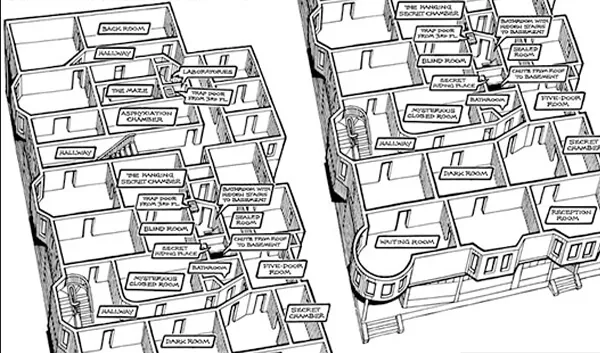
Most hotel rooms have a bed, a TV, and a bathroom. Anything else would be considered an upgrade. If you checked into Holmes' murder hotel, you got a few extra features you didn’t know you were going to end up paying for.
Each bedroom was soundproofed and had a gas line that was controlled from the other side of a wall. One could assume this was used to kill people with carbon monoxide poisoning. Doors within the hotel had silent alarms that tracked movement, so Holmes could know the whereabouts of each guest at any given time.
Inside the Hotel's Murder Suites
Beyond your basic, run-of-the-mill murder room, Holmes had a few special rooms in the World's Fair Hotel that were extra, extra creepy. One room was completely sealed up by brick. It had no doors and was only accessible through a trap door in the ceiling. Guests would fall through the trap door and be unable to escape. An upwards of 100 rooms had no windows.
Holmes was particularly proud of the second floor of the hotel. This is where he had what he dubbed the "Secret Hanging Chamber." As you could probably guess, this was used to hang people. We’re not sure if they were tied up and tortured or merely hanged by the neck.
Holmes Murdered His Victims in Numerous Ways
Holmes murdered his victims a number of different ways, but they all ended up in the same place. His hotel was a cacophony of terror – why choose one way to kill?
Holmes would start by luring victims into his labyrinth of murder. He would then track their movements. Sometimes he would play a game of cat and mouse, watching them get lost in the series of staircases and doors to nowhere, and sometimes he'd be a bit more kind and let them die immediately of asphyxiation or hang them in his hanging chamber. In some cases, he’d trap his victims in a chamber and let them die of starvation and thirst.
Selling His Victims for Parts
The only way out for Holmes' victims was down, and in a body bag (if he even bothered, which he definitely didn’t). When the hotelier completed a murder, he’d place the body in a dummy elevator or drop it down a secret metal chute that lead to the basement. Once the bodies arrived in the basement, Holmes would dissect them.
This was a money-making operation far sicker than his previous cadaver insurance fraud. Holmes didn’t just score big on room rentals; he sold their bones and organs using his connections with the medical community. Most of his victims were stripped of flesh and sold as skeleton models to medical schools.
How Holmes Disposed of the Bodies
The basement was equipped with a number of features to help Holmes dispose of the bodies without a trace. Holmes used giant furnaces to cremate the remains, which were, shockingly, the least suspicious installation out of all of the features his murder hotel had to offer. Chicago winters get cold, and you've got to heat a giant building somehow.
Cremation wasn’t the only way Holmes got rid of bodies. In a plot straight out of Breaking Bad, he used acid baths to dissolve the parts of his victims that he couldn’t sell. He would also use lime, which actually aids in the preservation of remains.
Holmes Finally Gets Caught – But Not in His Hotel
With the absolutely insane way the World's Fair Hotel was built, you’d think it would take a police officer all but 30 seconds of inspecting the lobby to realize it was a murder house. Even with all of the disappearances during the World’s Fair, Holmes didn’t get caught because of his Murder Castle.
After the World’s Fair ended, Holmes left Chicago for Boston to cover his tracks. He ended up performing another insurance scheme, which was the one that would bring him down. The scheme involved the murder of a business partner and friend named Benjamin Pitezel and three of his five kids. Holmes was arrested in Boston in 1874.
The Scheme That Brought Holmes Down
Holmes was pretty fond of insurance fraud, having performed schemes without a hitch since his college days. However, it was his final insurance scam that ended up being the one that brought him down. He convinced Pitezel to fake his own death so his wife could collect $10,000 in life insurance (worth roughly $200,000 now).
She would then split the payment with Holmes. This meant Holmes had to find a cadaver that looked like Pitezel and split the payout. That's a whole lot of effort. Instead, Holmes decided to kill Pitezel. He knocked him out with chloroform and set him on fire.
Holmes' Lack of Medical Knowledge Is What Proved His Guilt
After Holmes never paid up for a scheme that involved a former cell mate from one of his previous arrests, Holmes' cellmate snitched and lead police right to his door. Though Holmes confessed to insurance fraud, it was his lack of medical knowledge that gave away the fact he was a cold, hard murderer.
Holmes claimed he got Pitezel’s body from a doctor in New York who had shipped it to Philadelphia. He claimed that he managed to fit Pitezel’s body in a trunk because of his medical knowledge. Unfortunately for Holmes, the inspector remembered that the body was in full rigor mortis when it was discovered. This meant the body was fresh. When the inspector asked Holmes what techniques he used to stiffen a body after rigor mortis was broken, he had no answer.
Police Finally Discovered Holmes' Murder Castle
After Holmes' Boston arrest in 1874, police were able to trace him back to Chicago. This is where they found the Murder Castle. It didn’t take long for police to discover the wealth of torture chambers, the labyrinth of dead ends, the secret chutes and dummy elevators, and the basement morgue where Holmes would dissect his victims.
Unfortunately, because Holmes did an excellent job of disposing of the bodies or sold off their organs and bones, police were unable to find complete human remains. They only found a couple clues that linked him to just a few murders.
The Evidence: Piles of Bones and Women's Clothes
After tearing through Holmes' Murder Castle, police found a pile of animal and human bones. It was discovered that some of these bones belonged to a child between ages six and eight. Police also found a pile of women’s clothes covered in dried blood next to the dissection table. On the third floor, police found a gold chain and women’s shoe in a large stove.
With this evidence, police were able to connect Holmes to nine murders, though he confessed to nearly 30. It turned out that some of the people Holmes claimed to have killed were still alive.
The Trial and Sentencing
H.H. Holmes was only tried for the murder of Pitezel, even though he was connected to numerous other murders inside of the hotel. In October of 1895, Holmes was found guilty of murdering Pitezel and sentenced to death. After his conviction, he admitted to 27 murders across Chicago, Indianapolis and Toronto as well as six attempted murders.
Even during his last days, Holmes still hustled for cash. He was paid $7,500 (worth over $150,000 if you consider inflation) by Hearst newspapers in exchange for his confession. This turned out to be a major waste of money for Hearst (who should've known better than to make a deal with a con man). His accounts were completely contradictory and the confession was mostly nonsense.
Holmes Was Hanged and Requested to be Buried in Concrete
Holmes was hanged for his crime but not before placing an odd request. Most death row inmates don't get a say in what happens to their body after they die, but Holmes had to try. He was obsessed with the idea of dissection and didn’t want anyone to be able to tarnish his body the way he tarnished the body of his victims.
Holmes asked to be buried 10 feet underground and encased in a thick layer of concrete. Despite the fact that he totally deserved for grave robbers to exhume his body and dissect him just like he did with nearly every cadaver he came in contact with, his request was granted.














